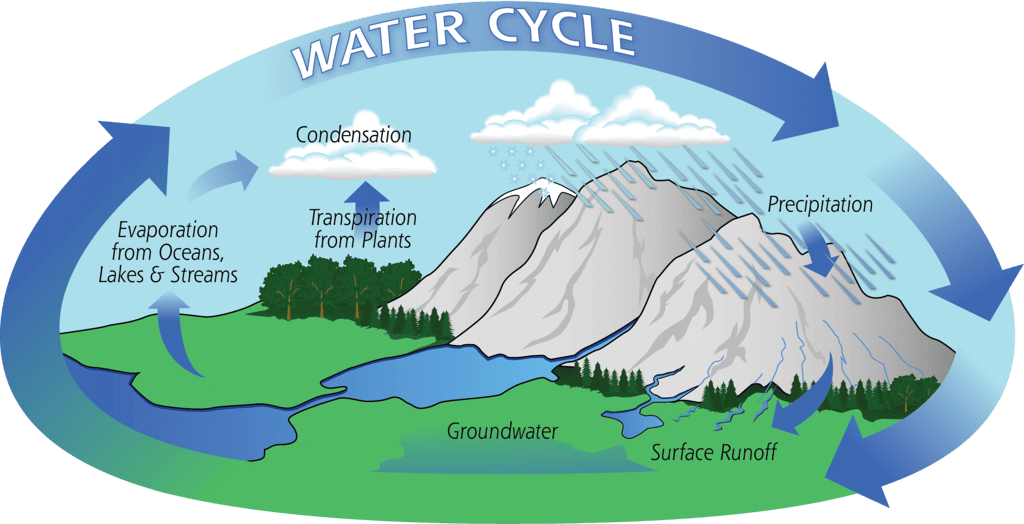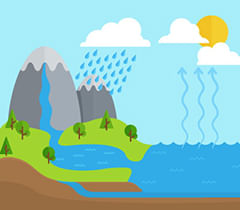The Water Cycle | General Knowledge for Young Learners - Class 1 PDF Download
| Table of contents |

|
| Introduction |

|
| Evaporation |

|
| Condensation |

|
| Precipitation |

|
| Collection |

|
Introduction
The world’s water moves between lakes, rivers, oceans, the atmosphere and the land in an ongoing cycle called – you guessed it! – the water cycle. As it goes through this continuous system, it can be a liquid (water), a gas (vapour) or a solid (ice).
Evaporation
Energy from the sun heats up the surface of the Earth, causing the temperature of the water in our rivers, lakes and oceans to rise. When this happens, some of the water “evaporates” into the air, turning into a gas called “vapour“. Plants and trees also lose water to the atmosphere through their leaves. This process is known as “transpiration“.
Condensation
As water vapour rises up high into the sky, it cools and turns back into a liquid, forming clouds. This process is called “condensation“. Currents high up in the air move these clouds around the globe.
Precipitation
When too much water has condensed, the water droplets in the clouds become too big and heavy for the air to hold them. And so they fall back down to Earth as rain, snow, hail or sleet, a process known as “precipitation“.
Collection
The fallen precipitation is then “collected” in bodies of water – such as rivers, lakes and oceans – from where it will eventually evaporate back into the air, beginning the cycle all over again. How it is collected, depends on where it lands…
Some will fall directly into lakes, rivers or the sea, from where it will evaporate and begin the cycle all over again.
If the water falls on vegetation, it may evaporate from leaves back into the air, or trickle down to the ground. Some of this water may then be taken up by the plant roots in the earth.
In cold climates, the precipitation may build up on land as snow, ice or glaciers. If temperatures rise, the ice will melt to liquid water and then soak into the ground, or flow into rivers or the ocean.
Water that reaches land directly may flow across the ground and collect in the oceans, rivers or lakes. This water is called “surface run-off“. Some of the precipitation will instead soak (or “infiltrate”) into the soil, from where it will slowly move through the ground until eventually reaching a river or the ocean.
Note:
- Water can change from a solid to a gas, without becoming a liquid first. Through this process of “sublimation” our planet”s ice can evaporate directly into the air without melting!
- The water cycle is also known as the “hydrologic cycle“.
|
64 videos|153 docs|40 tests
|















